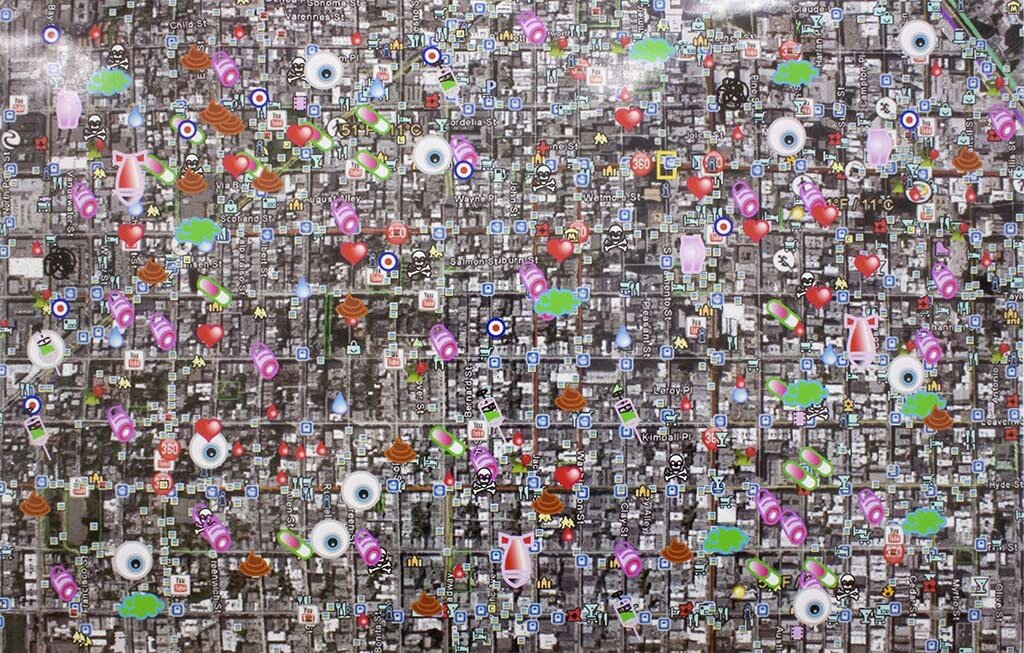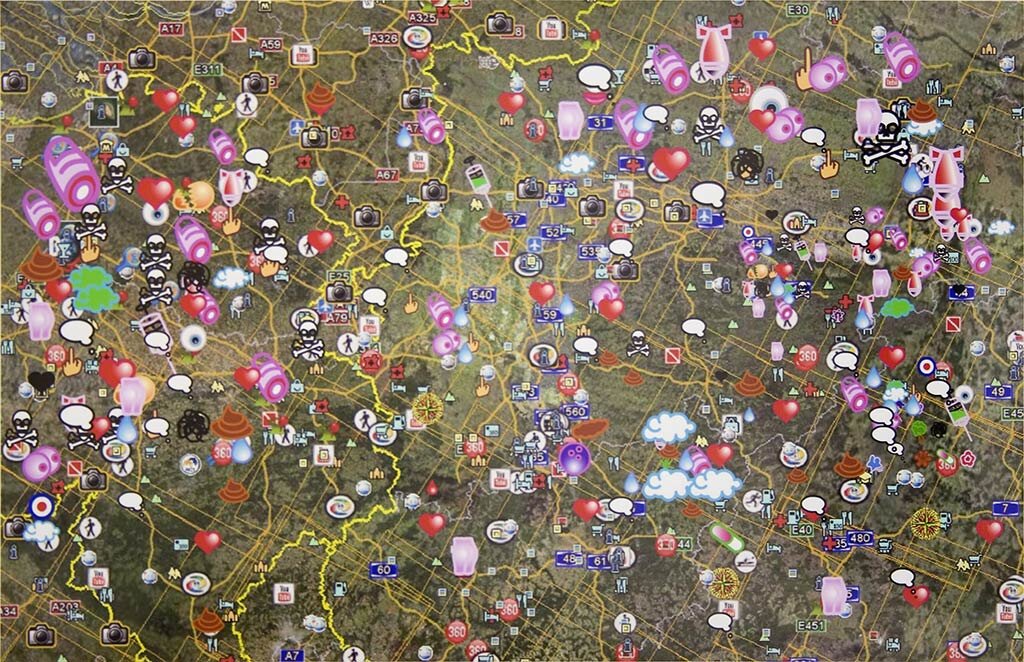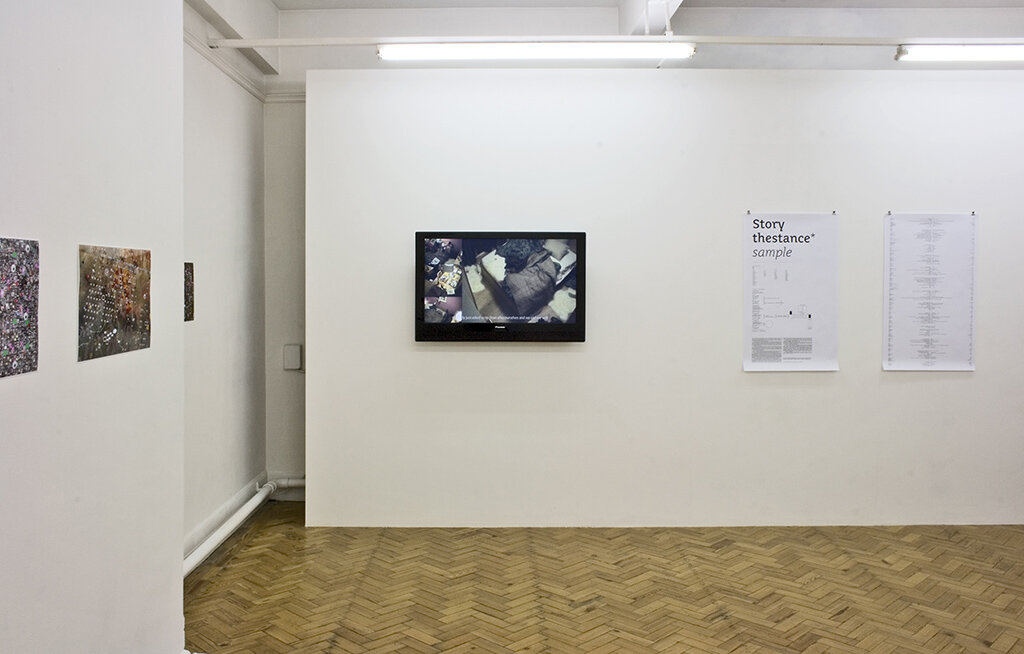Distance zkreslena
George Hladik, Martin Holland, Richard Loskot, Ales Loziak, Frantisek Janys Novotny, Libor Svoboda
1-18 December 2010
‘Distance zkreslena’, 2010, installation view
‘Distance zkreslena’, 2010, installation view
‘Distance zkreslena’, 2010, installation view
‘Distance zkreslena’, 2010, installation view
‘Distance zkreslena’ is about being in a strange new place far from home and the manipulative power of global media. With the internet’s constant stream of information and the ease of international travel, can there be a real awareness of the distance travelled between locations any more: have we lost our sense of place?
This is the first exhibition in the UK by Czech curator Anna Slocarova and consists of work by five young Czech artists and one British artist; all are either students, graduates or assistants of the Faculty of Arts and Design at the Jan Evangelista Purkyne University in Ústí nad Labem in the Czech Republic. The title combines the English word distance, commonly used in Czech, with the Czech word zkreslena meaning biased or distorted.
The work in ‘Distance zkreslena’ operates on the border between reality and fiction, between real and virtual environments that can be illusory. Communication and interaction takes place largely through email and social networks such as the Facebook; instead of physical maps and atlases we are relying more and more on internet applications like Google Earth or GPS navigation systems for actual travel. Our understanding of the real world is increasingly being informed and directed by the virtual. The question is: do we really want our identity to be reduced merely to an avatar on a computer monitor? Maybe we are missing out on something tangible, handling a real book with pages for example, or genuine experience, immediate and personal.
George Hladik’s performance video Welcome to our home (2008), deals with the seductive power of advertising on ideas of home. Filmed in an IKEA store in Prague, Hladik and a friend attempt to live in one of the store’s furniture layouts, displaying Hladik’s own slogans ‘Stay at home’ and ‘Feel free to stretch out on the bed and find out how many people can fit on the couch’ until the intervention of security personnel. The result is a kind of simulation of the artist’s private life, for whom the slogan ‘Stay at home’ became a personal challenge to resist convention.
Libor Svoboda, Place you live in (China), 2010, digital print, 18x18cm
Libor Svoboda, Place you live in (Krasnodar), 2010, digital print, 18x18cm
Libor Svoboda, Place you live in (Cameroon), 2010, digital print, 18x18cm
Libor Svoboda, Place you live in (Dublin), 2010, digital print, 18x18cm
Martin Holland, an English artist living in the Czech Republic, allows us a look into his personal life though his book I Should (But I Don’t Think I Will) Change The World (2010). Consisting of personal Polaroid pictures and rambling introspective stories of his everyday experiences, the book reveals the author’s unique perspective on life in the Czech Republic. Within the context of the exhibition, Holland’s work stands as a mirror image to the dislocation felt by the Czech artists.
Richard Loskot deals with the sense of altered reality brought about through the advent of new media and information systems. In his graphic digital print work Symbols (2010) Loskot focusses on visual internet applications such as Google Earth and GPS navigation systems that distort our perception of true distance. Cities, roads and other places begin to receive symbolic meanings personal to the artist through the substitution of his own pictograms for conventional symbols.
Ales Loziak’s book Welcome to Nordic China Center: Kouvola (2010), explores the theme of staying in a new environment far from home. Created during an internship in the Finnish town Kuovola, Loziak works with photography, his own text and text reproduced from the book ‘On the home front’ (Juoksuhaudantie) by prominent Finnish author Kari Hotakainena. Hotakainena’s story is about an exemplary father who wages a military-style campaign to amass enough money to buy a family dream house.
Frantisek Janys Novotny deals with communication and social interaction, concentrating on individuals and their dialogue through the internet and digital media, which he translates into different languages through the medium of an online translator. In Story: thestance (2010). Novotny uses an intimate conversation between lovers to play with the programme’s mechanical interpretation of human emotion and alteration of meaning. The resulting digital prints follow the progressive mutation of the conversation as it is repeatedly translated.
Frantisek Janys Novotny, Story: thestance (parts 1 & 2), 2010, digital prints
Libor Svoboda moves on the border of reality and fiction with his photographic project Place you live in (2010). While studying in Berlin, Svoboda asked friends from around the world to write descriptions of their home surroundings. The artist then explored Berlin to find and photograph sites that approximated the distant locations. The resulting installation is shaped by Svoboda’s imaginative interpretation of the original texts and by the difficulties of capturing comparable images due to the different linguistic, architectural or climatic conditions in Berlin.
Anna Slocarova is an independent curator from the Czech Republic. Her background is in architecture and art teaching. Since 2008 she has undertaken Curatorial Studies in the Czech Republic. During her studies she curated several exhibitions and art projects and was responsible for the running of the gallery Armaturka, a space for young artists, in the Art Faculty of the Jan Evangelista Purkyne University in Ústí nad Labem in the Czech Republic. She is on an Erasmus scholarship based at Vane in 2010.
Take a video tour of the exhibition
Share this page
















